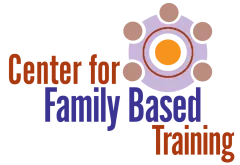A Deep Dive Podcast:
EcoSystemic Structural Family Therapy
Here are Chloe and Justin, our deep dive podcasters, describing the main concepts of ESFT in an easily digestible form.
The clinical model taught through the Center for Family Based Training, Eco-Systemic Structural Family Therapy (ESFT), is based on the idea that a child’s functioning is best understood and treated within the context of family and community relationships. This model is systemic at its core but is integrative. It incorporates theory and research related to attachment, child development, and complex trauma in understanding children’s behavior and their family’s interactions with one another and the larger community. The following ten principles guide an ESFT approach to intensive, in-home family-based treatment.
- Treatment is child centered.
All intervention must be grounded in a comprehensive understanding of the child within his/her specific family and cultural context. This includes knowing the child’s developmental status, temperament, preferences, strengths, vulnerabilities, attachments, and history.
- Treatment is family focused.
Major effort is given to convening and engaging all family members, who either currently or could potentially influence the child’s functioning. In addition to working energetically in the first 30 days of treatment to engage peripheral family members, they also work hard to reframe the child’s problems and the caregivers’ challenges as relational in nature. The family unit is broadly defined, including the child, siblings, caregivers, grandparents, or others deemed by family members to be important to them.
- Treatment is systemic.
Focus is given to identifying and shifting maladaptive interactional patterns within and between different family subsystems that constrain families from effectively supporting the child’s recovery from presenting problems and promoting development. Likewise, focus is given to amplifying more functional, growth-promoting interactional patterns. - Treatment is collaborative.
It is important that therapists build collaborative partnerships with all members within the treatment system. This includes the child, the caregivers, and other helping professionals working with the child and family. Working collaboratively involves including all relevant parties and avoiding a hierarchical or paternalistic posture. - Treatment builds on strengths.
It is important that therapists search for realistic and meaningful strengths and resources in the child, in the caregivers, in the family, as well as in the child’s peer network, the school, and neighborhood or community. A strengths orientation is sensitive to and respectful of the family’s social location, belief systems, and unique cultural norms. A strengths orientation builds hope that change is possible. - Treatment empowers caregivers.
As a result of the caregivers’ interactions with therapists, they should feel more competent, capable, and able to mobilize resources on behalf of their children. There is a strong belief that, with support, caregivers are in the best position to help the child’s recovery from presenting problems and to promote development. This means that interventions are collaboratively developed and implemented by caregivers, rather than therapists or other professional helpers. Caregivers are supported in assuming an overall leadership role in guiding or structuring the family and raising their children. This is viewed as critical to promoting and transferring skills beyond treatment. - Treatment is driven by sharply defined goals.
It is important that the therapists address no more than one or two sharply focused, emotionally-salient goals at a time. This enhances engagement and motivation, raising the salience of treatment above the distractions and stress of daily life. - Treatment is present-focused, action-oriented, and experiential.
Direct here-and-now experiencing of relationship patterns to create change is stressed over simply “talking about” problems. This is reflected in enactment, the cornerstone method of this treatment approach. It refers to any therapist-structured activity in which two or more members of the family are asked to engage directly with one another in more functional ways about an issue, conflict, or task. - Treatment builds on natural supports within the community.
Caregivers and children need ongoing support to succeed. Sometimes this involves developing linkages that have never existed. Sometimes this involves repairing ruptured relationships with neighbors, agencies, or others in the community. Sometimes it involves multiple system coordination when there are many services duplicating their efforts and overwhelming the family. - Treatment puts safety first.
It is important to recognize in working with multi-stressed families that both caregivers and their children have often experienced significant traumatic stress. This means they may enter interactions with one another and with therapists distrustful and already at a high level of internal arousal. Therapists must devote extraordinary effort to creating a therapeutic alliance that is compassionate, nonjudgmental, and respectful of the family’s cultural context. The relationship needs to feel emotionally safe. There can also be issues of physical safety. Living in a high-risk family system involves an elevated risk for escalation of aggression and violence. It is important for therapists to take this risk seriously and have a safety plan when working in the home.
The ESFT Logic Model
For a one-page graphical overview of the ESFT clinical model, as applied to intensive in-home services, click here. This graphic describes the problem, the target treatment population, key components of treatment, the stages of treatment, and expected treatment outcomes.
ESFT At a Glance
This downloadable three-page overview of ESFT, click here, addresses common questions asked by providers and payors considering adopting ESFT as a clinical model.
References Related to ESFT
This reference list, click here, includes published case studies, theoretical and conceptual articles, and research studies related to ESFT and FBMHS.

